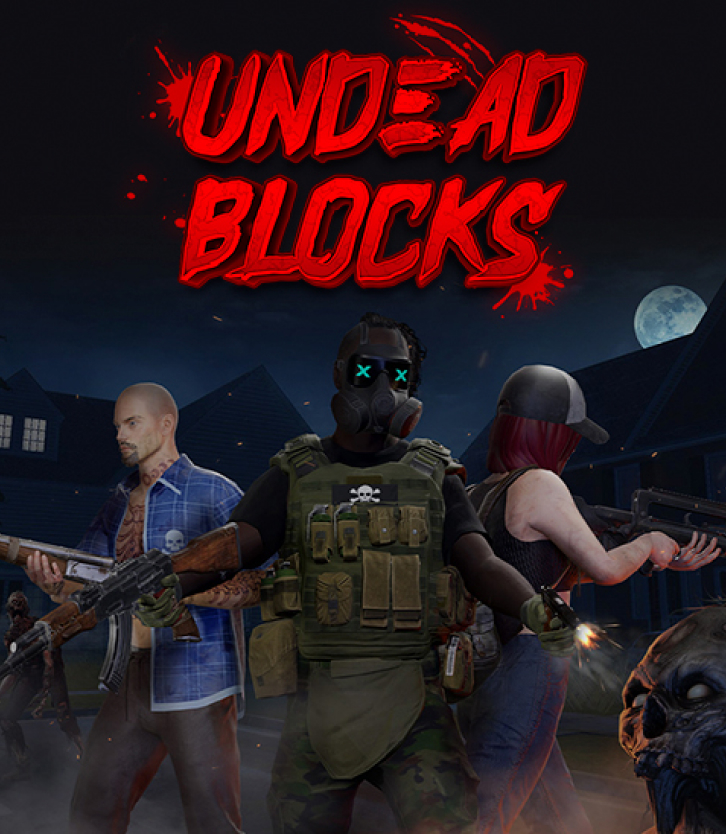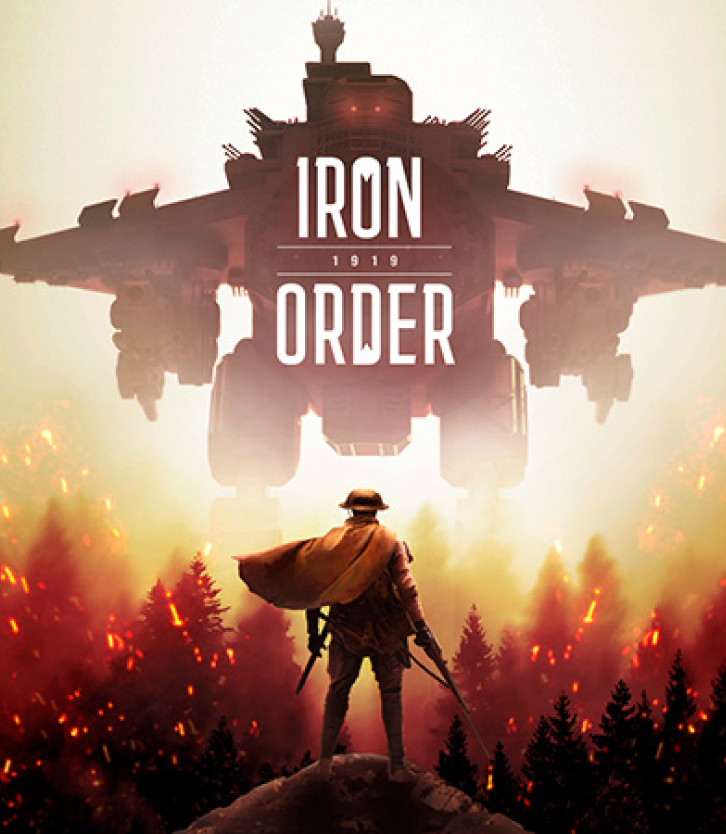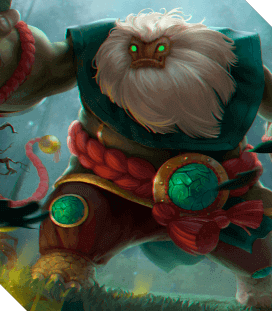Hidden object games have been a beloved genre among PC gamers for years. Their immersive stories, challenging puzzles, and captivating visuals offer a unique gaming experience that can be both relaxing and mentally stimulating. Hidden object games are appealing because they let players calm down and relax, in addition to the thrill and satisfaction of finding something you weren’t supposed to see. While countless hidden object games are available, some truly stand out from the rest.
Hidden Object Genre Features
The hidden object genre has captivated a diverse audience, becoming increasingly popular among gaming fans—these games are known for their intriguing blend of engaging visuals and brain-straining challenges. Here, we delve into the core features that define and distinguish the hidden object game genre.
Engaging Gameplay Mechanisms
One of the hallmarks of the hidden object genre is its complex, detail-rich environments. These visually intensive games often feature fully designed rooms or scenes with relevant artifacts. The player’s primary task is to navigate through this visual complexity to identify the key items hidden in plain sight.
Hidden Object Puzzles and Challenges
Hidden-object games often feature narratives woven through puzzles. The storyline progresses as the player solves each scene, uncovering objects that may serve as clues or tools to unlock subsequent parts of the story. Beyond the standard hidden object scenes, these games feature mini-games and puzzles. These can range from jigsaw puzzles and riddles to logic puzzles like match-three games. They break up the gameplay, providing a refreshing change and an additional challenge. Solving these mini-games is crucial to progress in the story, as they provide items or clues for subsequent scenes.
Thematic Consistency
Many hidden object games maintain thematic consistency by using a uniform art style, period-specific designs, or a particular set of colors to enhance the gaming atmosphere. Whether it’s a noir detective story, a ghostly mystery, or a fairytale adventure, the themes often deeply influence the objects hidden, the background scenery, and the game’s overall aesthetic.
Varied Levels of Difficulty
These games often feature varied levels of difficulty. Beginners might start with more straightforward, less cluttered scenes. Some games introduce timed challenges, penalties for random clicking, or even total blackout conditions to increase the difficulty.
Interactive and Dynamic Objects
Some advanced games in the genre have begun incorporating interactive and dynamic objects. These are items that players can manipulate, move, or even use to uncover or alter other items in the environment. This feature adds depth to the gameplay, requiring more profound interaction with the scene beyond simple point-and-click.
Replayability
Finally, the hidden object genre is known for its replayability. Games often offer bonus rounds, alternative endings, or unlockable content that provides new challenges. The objects players need to find might change locations in different playthroughs, or there might be new, more challenging modes that unlock after completing the game once.
Step-By-Step Process Of Creating Hidden Object Game
Hidden object games are captivating and immersive experiences that challenge players’ observational skills and problem-solving abilities. If you wonder how to make a hidden object game, first, accept the idea that it involves a meticulous step-by-step process that combines artistry, game design, and technical prowess.
Step 1: Conceptualization and Design
- Begin with a compelling concept. Decide on the game’s theme, storyline, and setting. Consider what may engage your players;
- Develop the game’s narrative. Create a captivating story that drives players to search for hidden objects;
- Design the game’s visual style. Decide on the art style, color palette, and overall aesthetic.
Step 2: Scene Creation
- Design scenes. Each scene should have a specific atmosphere and hidden objects that fit seamlessly into the environment;
- Hide objects strategically. Decide where to hide objects within each scene. Ensure that the objects are challenging to find but not frustratingly obscure;
- Make tests. Playtest scenes to ensure they strike the right balance between difficulty and enjoyment.
Step 3: Object List Creation
- Compile object lists. Create lists of objects that players must find in each scene. Ensure that the lists are relevant to the game’s storyline and theme;
- Vary object difficulty. Mix simple objects with more obscure ones to keep players engaged. Objects should be both thematic and visually distinctive;
- Consider language localization. If your game targets a global audience, prepare object lists in multiple languages to expand your player base.
Step 4: Gameplay Mechanics
- Develop gameplay mechanics. Decide how players will interact with the scenes. Typically, players tap or click on objects to select them;
- Implement zoom and pan. Enable players to zoom in and pan around scenes for a closer look, enhancing their ability to find hidden objects;
- Include hints and power-ups: Integrate hints or power-ups that players can use when stuck.
Step 5: Technical Development
- Choose a game engine. Select a game engine that suits your development needs. Popular choices include Unity, Unreal Engine, and custom-built engines;
- Optimize for platforms: Ensure that the game is optimized for the platforms you intend to release it on, such as PC, mobile devices, or web browsers.
Step 6: Playtesting and Balancing
- Ask testers to evaluate the game’s difficulty, gameplay flow, and overall enjoyment;
- Check players’ feedback. Collect feedback from playtesters and make adjustments based on their input. Those adjustments may involve fine-tuning object placements, scene design, or hint systems.
Step 7: Polishing and Finalization
- Polish visuals. Refine the artwork, animations, and user interface to create a visually stunning experience;
- Bug testing. Conduct thorough testing to identify and fix technical issues, including glitches, crashes, or performance problems;
- Sound and music. Add appropriate sound effects and music to enhance the game’s atmosphere and immersion.
Creating a hidden object game combines creativity, technical expertise, and attention to detail. Choose where and how you’ll release the game. Options include app stores, game distribution websites, or streaming platforms. Remember to build a community of game fans through social media, forums, and gaming communities to generate interest and anticipation.
Creating Narrative In A Hidden Object Game: Vital Elements
Hidden object games are more than just visually appealing scenes and challenging puzzles. They can also offer rich storytelling experiences that draw players into immersive worlds, keeping them engaged and eager to uncover secrets. Crafting a compelling narrative in hidden object games for PC and seamlessly intertwining it with puzzles is an art form that elevates these games to new heights.
Role of Storytelling in Hidden Object Games
Every tremendous hidden object game begins with a captivating story. Your narrative serves as the foundation upon which the entire game is built. The story should immediately capture players’ attention and pique their curiosity. Whether it’s a mystery, adventure, or fantasy, make sure it’s a story players want to explore.
Popular plots engage players and provide a rich backdrop for the challenging puzzles and hidden object scenes that define the genre. Here are some of the most beloved and enduring plots in hidden object games:
Mystery or Murder Investigations
One of the most enduring and popular plotlines in hidden object games involves players stepping into the role of a detective or investigator. These games often feature complex mysteries, crime scenes, and enigmatic characters. Players must gather clues, search for hidden evidence, and solve puzzles.
Murder mysteries in such games are akin to classic Agatha Christie novels. Players take on the role of an amateur sleuth, solving murders and uncovering conspiracies in a thrilling game of whodunit.
Haunted Houses and Ghostly Tales
Haunted houses and paranormal mysteries have an enduring appeal. Players explore eerie mansions, abandoned asylums, or haunted villages where supernatural forces are at play. These games combine horror and mystery as players uncover the dark secrets of the haunted location.
Time Travel and Historical Adventures
Time travel or historical settings transport players to different eras and periods. These games offer the opportunity to explore ancient civilizations, solve historical puzzles, and interact with famous historical figures. They often combine education with entertainment.
Adventure in Exotic Locales
Exotic adventures take players on a journey to breathtaking and culturally rich locations worldwide. Whether exploring the Amazon rainforest, jungles, and isolated island, uncovering archaeological treasures in Egypt, or embarking on a safari in Africa, these games offer a blend of adventure, exploration, and hidden object challenges.
Fantasy Worlds and Magic Quests
Fantasy-themed hidden object games transport players to magical realms filled with mythical creatures, ancient artifacts, and magic spells. These games often involve epic quests to save the fantasy world from dark forces.
Family Secrets and Inheritance Mysteries
Family secrets and inheritance plots add a personal and emotional dimension to hidden object games. Players often inherit a mysterious estate or uncover long-lost family secrets, leading them on a journey of self-discovery and intrigue.
Treasure Hunts and Archaeological Expeditions
Treasure hunting and archaeological expeditions are popular themes in hidden object games. Players become modern-day Indiana Jones-like adventurers as they explore ancient temples, tombs, and hidden chambers in search of valuable artifacts and riches.
Mythical Creatures and Legends
Mythical creatures and legendary tales from folklore and mythology feature prominently in hidden object games. Players encounter creatures like vampires, werewolves, and fairies, adding an element of fantasy and supernatural intrigue in playing.
Escape from Captivity
Players discover themselves trapped or imprisoned and must use their wits to escape. These scripts often involve intense suspense, keeping players on the edge of their seats.
Intertwining Narratives and Puzzles
The narrative should give players a clear purpose for searching for hidden objects. Whether they solve a mystery, unravel a family secret, or embark on a quest, the story should motivate them. Characters and plot developments should elicit emotions in players. Whether it’s empathy for a troubled character or excitement about a plot twist, emotional engagement keeps players intrigued.
Ensure that each hidden object scene has a contextual link to the narrative. Objects should serve a purpose within the story, not just as random items to find. Use hidden object scenes to reveal elements of the story gradually. Each scene should contribute to the overarching narrative, uncovering clues, advancing character relationships, or unveiling plot twists. Introduce characters that players can interact with throughout the game. Dialogues and interactions with characters can provide context for hidden object scenes and deepen the narrative.
Hidden object games are known for their puzzles, artfully intertwined with the narrative. Consider the following:
- Puzzle Relevance: Ensure that puzzles are not mere obstacles but serve the narrative. For instance, unlocking a hidden compartment might involve solving a puzzle.
- Puzzle Diversity: Offer a variety of puzzles that match the game’s theme and storyline. Puzzles can range from logic challenges and riddles to inventory-based puzzles that advance the narrative.
- Puzzle Integration: Integrate puzzles seamlessly into the narrative flow. Puzzles should feel like a natural part of the story, not a detached gameplay element.
Importance Of Illustrations And Art Style
Art style in hidden object games is the visual language that defines the game’s aesthetic and sets it apart from others. It encompasses the choices made regarding color palettes, character design, environmental details, and overall visual presentation. Here’s why it matters:
- Distinctive Identity: A well-defined art style gives a hidden object game its unique identity, making it instantly recognizable among players.
- Emotional Impact: It can evoke specific emotions and reactions from players. Bright, cheerful visuals create a sense of wonder and excitement, while dark, moody aesthetics instill a feeling of mystery and suspense.
- Consistency Across Scenes: Art style ensures visual consistency across the game’s various scenes and environments. It ensures that the game maintains its cohesive look and feel, regardless of the diversity of locations and settings.
Creating In-Game Animation With No Movement Overload
The first step to avoiding movement overload is to ensure that every animation serves a purpose. Animations should provide essential feedback to players. For example, in a first-person shooter, the reloading animation communicates the progress of the reloading process.
Use animations to advance the narrative or convey information about the game world. Subtle environmental animations like rustling leaves or flickering candles can create ambiance without overwhelming players.
Animations also should respond to player actions, such as character movements, interactions, or combat actions. These animations should be intuitive and enhance the player’s sense of agency.
Subtle Animations That Enhance Gameplay
Subtle animations are the secret sauce of many great games. They enhance the player’s experience without drawing excessive attention.
- Idle Animations
Characters and objects can have idle animations that subtly breathe life into the game world. During inactivity, a character might fidget, glance around, or interact with nearby objects.
- Environmental Details
Subtle environmental animations like swaying trees, rippling water, or flickering lights can create a dynamic and immersive atmosphere.
- UI Feedback
Use animations in user interfaces to guide player attention. Subtle transitions, highlights, or tooltips that appear when needed can improve player understanding and engagement.
Top-5 Best Hidden Object Games We Advise
The world of hidden object games is a treasure trove of immersive adventures, challenging puzzles, and captivating narratives. While tastes vary, here are five of the best hidden object games we advise based on sale rates and game platforms’ ratings:
1. Mystery Case Files: Ravenhearst
This iconic hidden object game takes players to the enigmatic Ravenhearst Manor, where dark secrets and a haunting atmosphere await. The game seamlessly blends hidden object challenges with intricate puzzles, leading players deeper into a gripping narrative of mystery and intrigue. With its hauntingly beautiful art, Ravenhearst has become a classic in the genre.
In Mystery Case Files: Ravenhearst, players locate items to reveal journal entries as they follow Emma Ravenhearst’s life in Blackpool in 1894. The player can go through Emma’s diary entries to understand how she moved to England from America to become a teacher, fell in love with Charles Dalimar, but turned down his marriage proposal. Charles then started to covertly poison Emma and snoop on her family’s letters to prevent her from leaving England. The player is addressed directly in the last diary entry, which takes them to a closed basement door where they discover Emma’s body in a coffin, her soul having been freed, now that the case of her disappearance has been solved.
2. Hidden Folks
“Hidden Folks” brings a refreshing twist to the hidden object games PC genre with its hand-drawn, interactive, and whimsical landscapes. Instead of static scenes, players explore bustling, animated worlds teeming with quirky characters and hidden targets. The game’s charming sound effects and playful visuals create a delightful and engaging experience.

Adriaan de Jongh, a Dutch indie video game designer, and Sylvain Tegroeg, a Dutch artist, created Hidden Folks. De Jongh used the Unity game engine to create the game, but he also made special tools for digitizing hand-drawn imagery and keeping details on mobile devices. The game Hidden Folks was developed to be a fun and unwinding experience. The audio in the game is out of sounds created by the creators’ mouths.
3. Labyrinth City: Pierre the Maze Detective
The young detective Pierre is on a mission to recover the stolen Maze Stone from the mischievous Mr. X. This magical artifact has the power to transform the surroundings into intricate labyrinths. Mr. X turns the city into a complex maze, and Pierre tries to navigate through imaginative environments to retrieve the stone and restore order.
Developers filled the game with pleasant nostalgia by setting it in beloved “Where’s Waldo?” aesthetic. This beautifully hand-drawn hidden object game features interactive mazes and tons of hidden characters and items. The amount of animated objects on the map gives an impression of being in a weird imaginary wimmelbook world.
Created by Darjeeling, the game won an award IndieCade 2021 as Family Game of the Year, as well as NYX Game Awards 2022 as the Best Family & Kids Game.
4. Grim Legends: The Forsaken Bride
The game combines fairy-tale elements with hidden object gameplay to create an enchanting experience. As players unravel the mysteries of a cursed wedding, they are treated to lush, hand-painted environments and puzzles that fit into the narrative. The game’s engaging story and visually stunning art make it a standout in the genre.
5. Claire Hart
Claire Hart is a detective who has supernatural abilities that allow her to sense the memories and feelings of objects around her. Players help her solve mysteries by searching for hidden objects in various locations full of weird things.

This classic hidden objects game was so successful that its publisher Pogo produced a sequel, Claire Hart: Secret in the Shadows. Kevuru Games collaborated with the company and created over a hundred pieces of beautiful environment art: luxurious mansions, blooming gardens, huge shops and green parks. You can see some of them in the case study.
Kevuru Games Expertise in Hidden Object Games for PC
Kevuru Games has significant experience in working on hidden objects game design and development, showcasing an impressive portfolio and a team of skilled artists and designers at a reasonable cost to make a game.
Our group has skills and talents for evoking a spooky mood of relentless searching for something significant. Our artists have a lot of experience making HOG environments and objects, so we can assist you in making your game outstanding. We are prepared to design any environment from scratch if you start developing a game. We can create the environment you require and immerse the player in it, whether in the cluttered cellars, elegant rooms, gorgeous streets, or the holds of ships. Please examine our hidden objects art portfolio.
Since assets are the focus of the hidden object game, we use innovative methods and technologies to create them. Each will be designed to have a unique look while seamlessly blending into the surroundings. The design of our HOG always appears very cohesive since we make natural settings that are undeniably real. We proudly declare our long-term cooperation with POGO, the publisher of Claire Hart HOG, for which we created over 150 locations: premises, restaurants, offices, halls, shops, streets, etc.
Here are the benefits of working with us on hidden objects game projects:
Unique design and comprehensive approach
Thanks to our solid experience in developing hidden object game design, we are well aware of the best ways to create unique settings and eye-catching objects to completely immerse the player in the atmosphere.
75% middle and senior artists
Most of our artists and hidden objects game developers are advanced and highly skilled professionals with 7+ years of experience in creating arts for this type of games. They have worked on projects of various directions and complexity and know all the subtleties and nuances.
Perfect delivery pipepine
Transparent project management, close-knit team and well-organized processes help meet agreed deadlines within the designated budget and scope of needs, taking into account all requirements for style and quality.
13 years on the game design market
A wealth of experience has allowed us to assemble teams of experts for each direction of hidden objects game development, which can perform work for our clients as close as possible to their idea and needs.
The sheer variety of HOG games we have created has helped shape our authentic style and clear vision for a successful game in this genre. We are working to make the gaming world a better place, and our advantages are our support.
Are you looking for an experienced partner to create a top hidden object game? Drop us a line and see what we have to offer.














![Indie Game Development: Guide to Revenues, Most Profitable Genres & Monetization [+10 Best Indie Games 2024]](https://kevurugames.com/wp-content/uploads/fly-images/11949/indie-pre-138x138.jpg)